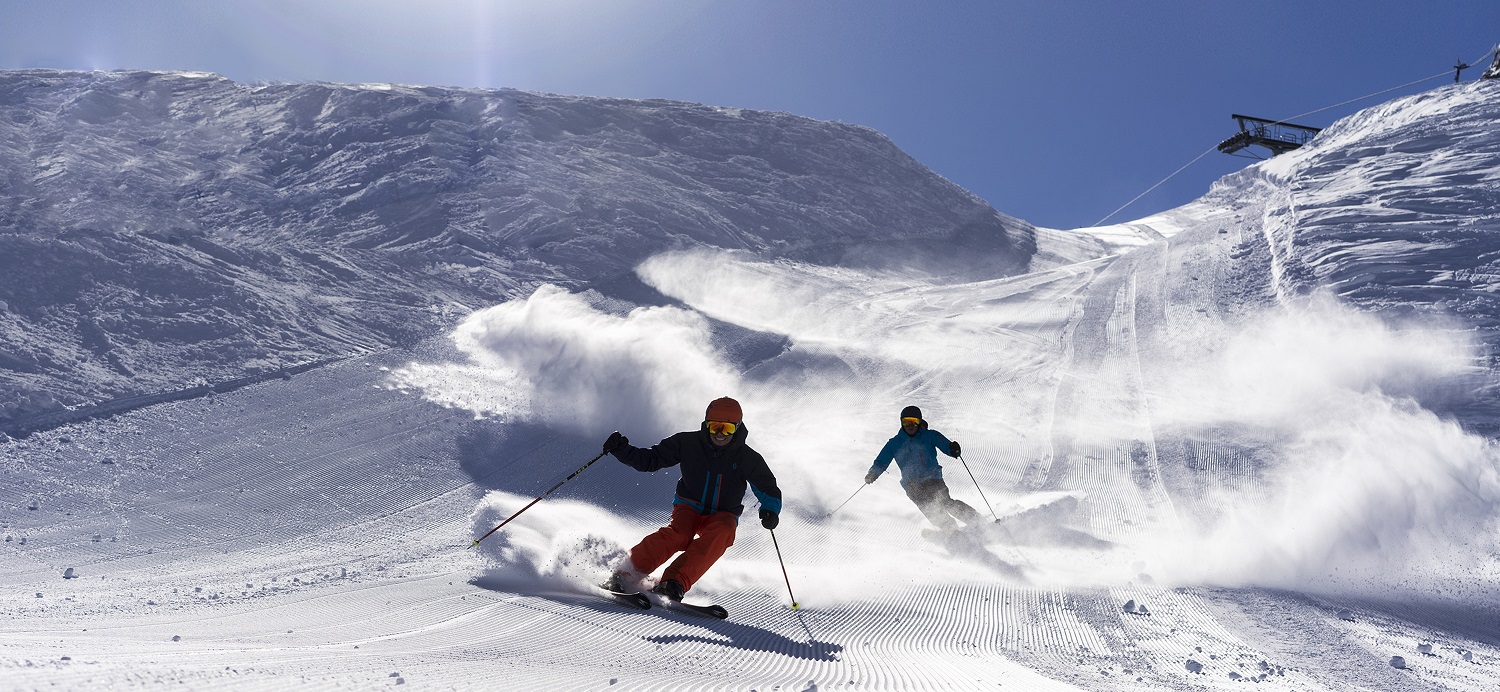How to Ski on Steep Slopes

While there's no need to go hell for leather on the slopes - and, indeed, many skiers find maintaining a leisurely pace to be more enjoyable than travelling at high speeds - it's always good to have the ability to tackle the steeper slopes. Not only will this increase your range in terms of the number and variety of runs that you can ski on, but it will also give you the capacity to pick up the pace every now and then when you fancy raising the adrenaline levels a little.
However, as with all things skiing-related, it's never wise to push yourself beyond the limits of your comfort zone, which is why it's important to know what you're doing before you attempt any steep black runs. With that said, here are a few pointers to help you on your way.
Grip with your edges
One thing that many beginners struggle with is getting enough grip with their edges when turning, and the steeper the slope, the harder this becomes. To maintain control, you'll need to be able to use the edges of both skis at the same time, rather than just the downhill ski. You may also find that you have to apply more force in order to maintain your grip - although as you become more confident and increase your speed, this will become less of an issue.
There are a number of ways to improve your use of edges. The first, and most obvious, is to practise on shallower slopes, concentrating on using both of your edges as you make a turn and gradually moving on to steeper runs as you progress. The other way is to perform leg exercises like squats, which are designed to increase strength in the muscles you'll be using when turning.
Maintain your body position
When on a steep slope, the natural tendency is always to compensate for the gradient by leaning further back on your skis. However, this is often what holds many people back, and rather than preventing you from falling over, it's actually more likely to cause you to lose your balance.
The reason is that when you shift the weight too far back on your skis, you lose the flex in your knees and ankles, making it harder to control your movements. Therefore, the best thing to do is to try and maintain the body position you would naturally assume on a shallower gradient, ensuring your weight remains centred on your skis and that your torso is not leaning too far back.
Obviously, this requires confidence, and it can be quite nerve-wracking to lean forwards rather than backwards when on a steep slope, but it really is the only way to remain in control of your skis. It may also mean that you have to travel faster rather than slower, but this too is often necessary in order to maintain momentum and keep yourself balanced. Slow down too much and you're more likely to fall over.
As with all things, there really is no substitute for practice and hard work, so if you want to step up from greens and blues to reds and blacks then you'll need to be prepared to put in the effort. Just remember that patience is also a virtue, which is why it's best to take it slow and gradually build up to the steepest slopes, rather than trying to rush things.
To find out more about a Ski Weekends holiday for this season, call one of our ski experts on 023 8020 6971 or email sales@skiweekends.com
